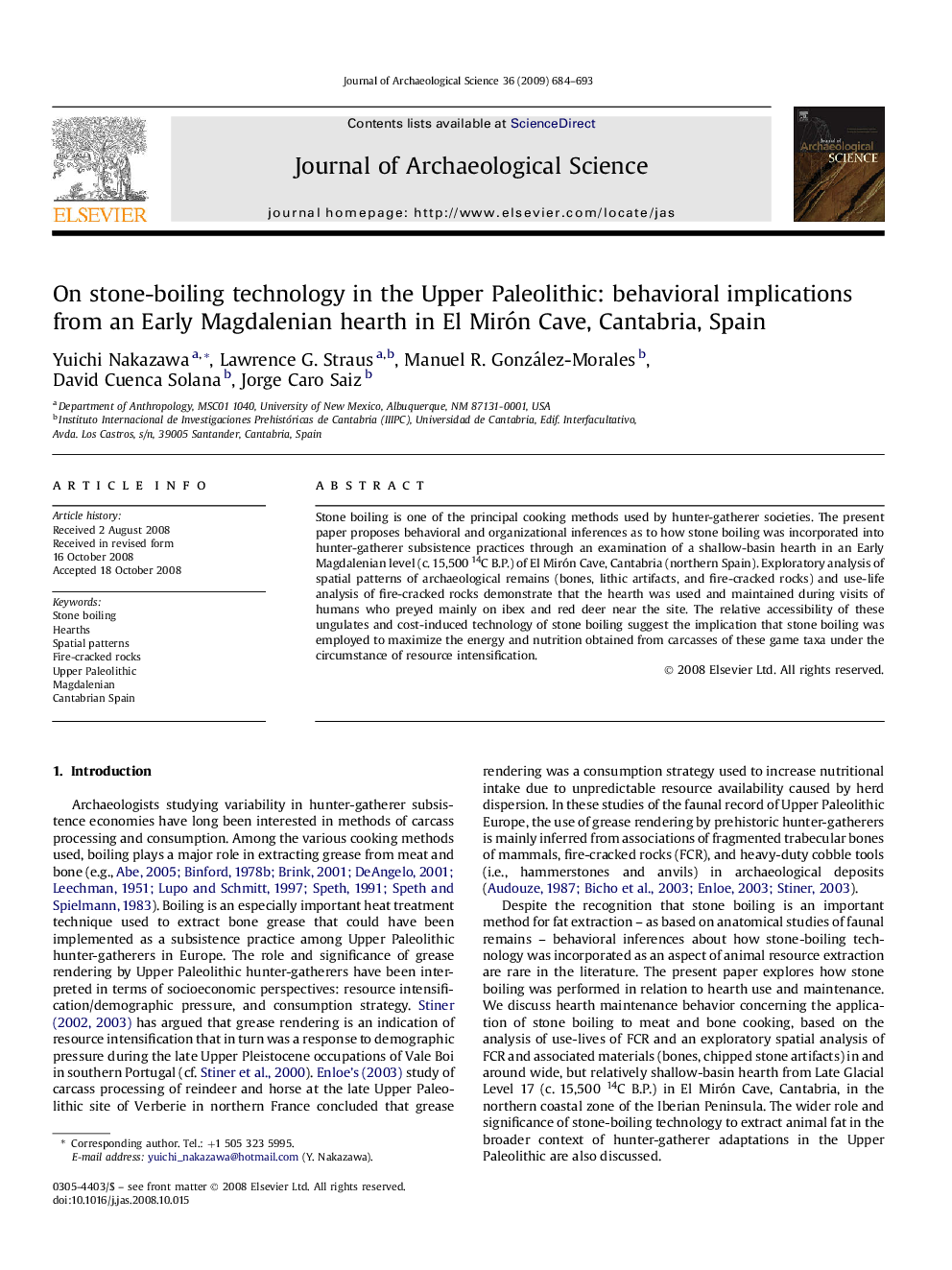| Article ID | Journal | Published Year | Pages | File Type |
|---|---|---|---|---|
| 1036808 | Journal of Archaeological Science | 2009 | 10 Pages |
Stone boiling is one of the principal cooking methods used by hunter-gatherer societies. The present paper proposes behavioral and organizational inferences as to how stone boiling was incorporated into hunter-gatherer subsistence practices through an examination of a shallow-basin hearth in an Early Magdalenian level (c. 15,500 14C B.P.) of El Mirón Cave, Cantabria (northern Spain). Exploratory analysis of spatial patterns of archaeological remains (bones, lithic artifacts, and fire-cracked rocks) and use-life analysis of fire-cracked rocks demonstrate that the hearth was used and maintained during visits of humans who preyed mainly on ibex and red deer near the site. The relative accessibility of these ungulates and cost-induced technology of stone boiling suggest the implication that stone boiling was employed to maximize the energy and nutrition obtained from carcasses of these game taxa under the circumstance of resource intensification.
